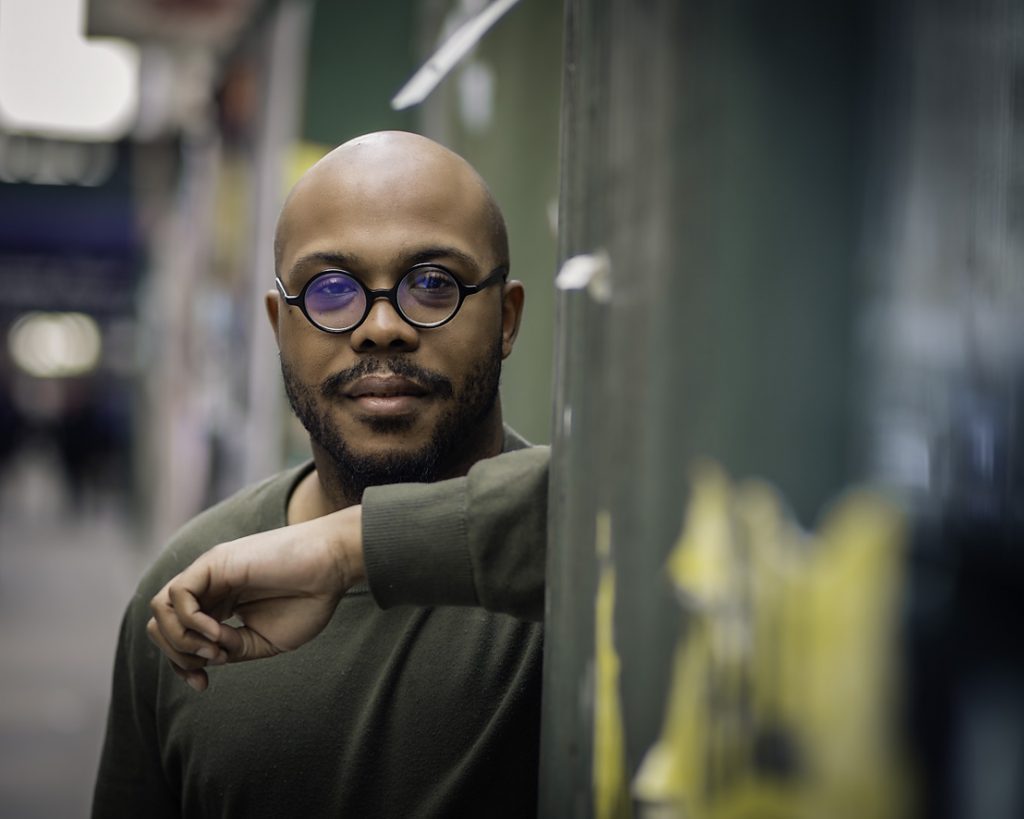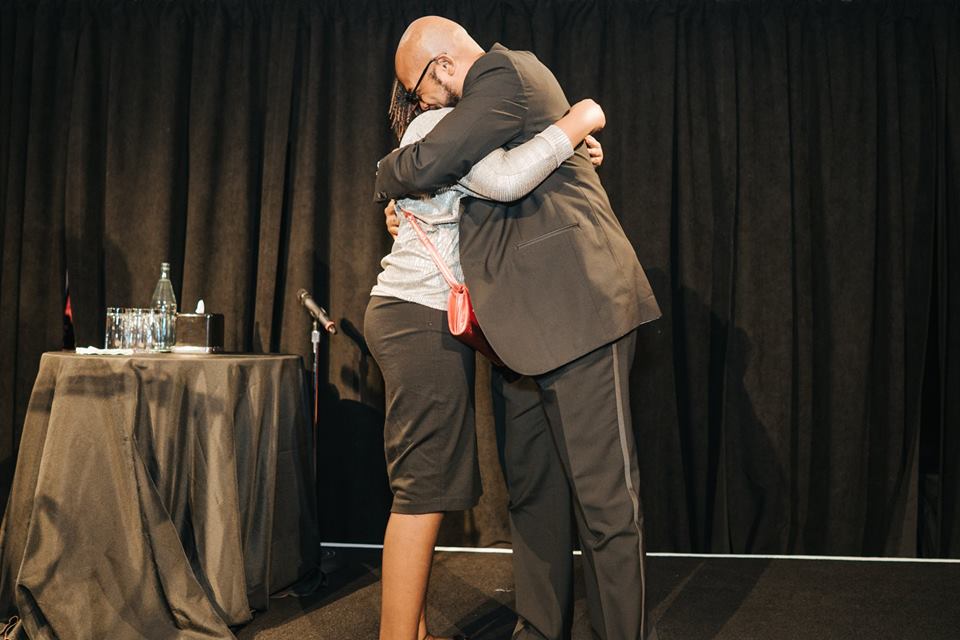Have you ever given to a complete stranger?
to Give [giv] verb: to freely transfer possession of something to someone: to hand over, without expecting compensation
Michael Powell is a “giver.” He regularly donated blood. He also donated his bone marrow. Twice. Once with a stem cell transplant, and again through a bone marrow transplant. He gave, not knowing where, or to whom it was going. He is a giver.
In 2007, while at a company blood drive in NYC, he met some folks from the Icla da Silva Foundation. They were asking people to consider joining the Be The Match bone marrow registry. Most blood cancer patients, people with varying forms of leukemia, lymphoma, or sickle cell, don’t have a matching donor in their family. They require a transplant from a stranger in order to survive. Their doctors search the Be The Match registry, looking for a matching donor.
On the day in 2007, after he finished donating blood, Michael joined the bone marrow registry. He filled out some forms, swabbed his cheek, and was entered onto the registry. It was that simple. The process is now digital, and they mail the swabs to your home, but anyone between the age of 18 and 44 can join.
Michael agreed to donate his stem cells or bone marrow, should the need ever arise.
Matching and the Challenge
Unfortunately, that need arises every day. Approximately 14,000 times every year. The challenge is in finding the perfect “match” for those patients in need of a transplant.
Only one out of every 406 people on the registry will match and donate. A match is usually determined by a person’s ethnic ancestry. An African American patient is most likely to receive a successful transplant, a perfect match, from an African American donor. Michael wasn’t aware of it at the time, but African American donors are in short supply. For the African American patients with a blood cancer or sickle cell, only 23% are able to find a match on the current registry. By comparison, Caucasians are able to find a successful match 77% of the time.
There simply aren’t enough potential donors included on the registry, especially donors of ethnic diversity. The Icla da Silva Foundation is doing its best to change that by specifically holding registration drives within diverse communities.
You can join the registry by clicking the link. You may match a patient in need.
Michael’s First Bone Marrow Donation
In 2013, six years after joining the registry, Michael received a call that he was a match. He had forgotten that he was even on the registry. Be The Match explained the process and asked if he would be willing to donate his stem cells through a PBSC donation.
He agreed.
They scheduled a check-up, to make sure he was physically fit, and organized some tests to ensure he was a perfect match. The donation process includes injections of filgrastim, which helps increase the number of blood-forming cells in the body. Be The Match organized a visiting nurse, who came by his apartment daily, for the filgrastim shots.
Five days later, he donated at Memorial Sloan Kettering hospital in NYC. It took about 4 hours. His blood was removed through an intravenous needle in one arm, passed through a machine that collected the blood-forming cells, and the remaining blood was returned to his body through a needle in the other arm.
Michael told me that Be The Match took care of everything. They offered to have someone go with him to the hospital. They organized a car to pick him up and take him back home. They even paid for a meal for him and a friend after his donation.
He insists the process was easy and pain-free. He had some joint stiffness for a few days, but he would recommend that everyone join and donate if they are offered the opportunity.
The next step was waiting to hear if it was successful for the patient.
Unfortunately, shortly after the transplant, due to complications from their cancer, the patient passed away. Michael was greatly affected by that news. He says “it meant so much for me to give, but to learn that the patient passed away, that was very heavy on my heart.”
Michael’s Second Donation
In 2017, he received a second call. He was a possible match for another patient.
Again, Be The Match kept in close communication and organized everything for him. They scheduled physical exams and blood tests.
While waiting to see if Michael was the best match, the patient had complications and the doctor indicated that this time, a surgical marrow extraction was the preferred method.
Michael had never stayed in a hospital before, and he had never had surgery.
Still, he agreed that he would donate.
When I asked him why he shrugged and said to me “Someone needed help and it was an opportunity for me to help that person…I couldn’t think of a reason not to do it.”
They scheduled surgery for June at Memorial Sloan Kettering, where they would extract bone marrow from his pelvic bone. He was anxious. Understandable so.
Michael tells me that the nurses and doctors at the hospital were all incredible. Answering all of his questions and making sure he was comfortable with his decision to donate his bone marrow. Right up to the very last minute, the doctor and anesthesiologist asked him if he was still comfortable going through it.
Once again, Michael said yes.
On June 1, 2017, at Memorial Sloan Kettering hospital in New York City, Michael donated his bone marrow through a surgical procedure. On June 2, a sickle cell patient received Michael’s bone marrow in a transplant at Nationwide Children’s Hospital in Columbus Ohio.
Always positive, Michael remarked that during the surgery, it was the best sleep he had ever had. He was emotionally relieved that it was over; physically, he was stiff.
Again, I kept pushing Michael about the why. I think he grew tired of me asking. His response was direct and to the point – “I didn’t think of why, I thought of how, and when do you need me. I knew I wasn’t going to be harmed from it.”
I still find his perspective to be remarkable. Michael believes that we are all connected. It is very important to him. He tells me that “we all have a chance to make a difference in someone’s life.” While that is very true, unfortunately, many people do not act on it.
Michael Powell did, and he made a difference in someone’s life. We are forever grateful.
The Meeting
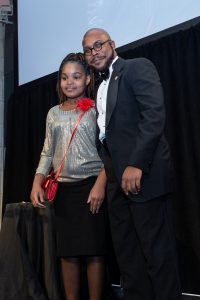 After a transplant in the United States, the donor and recipient are not allowed to meet for at least a year. On October 17, 2018, 16 months after the bone marrow transplant, Michael was invited to the annual Icla da Silva Hope Gala. It was at the Gala that he met his patient, Aunesti Sullivan.
After a transplant in the United States, the donor and recipient are not allowed to meet for at least a year. On October 17, 2018, 16 months after the bone marrow transplant, Michael was invited to the annual Icla da Silva Hope Gala. It was at the Gala that he met his patient, Aunesti Sullivan.
Every year at the Gala, we introduce patients and their donors to each other on the stage. It was the first time that Michael and Aunesti met. It was an emotional experience for everyone in the room.
Aunesti is a 13-year-old girl from Toledo, Ohio. She was born with Sickle Cell Anemia, and as a result of the Sickle Cell, was also suffering from Avascular Necrosis (AVN), or brittle bone disease.
Aunesti is doing very well. She is active, back in school, and living the life of a teenager.
Michael is happy to have made a difference in her life. He tells me they keep in constant contact via text and phone. He has agreed to work with us to help spread the word about the importance of joining the registry and staying committed to donate if you ever match a patient In need.
Anyone between the ages of 18 and 44 can join by clicking the link below.
Thanks for reading, and thank you to Michael for making a difference in someone’s life. We are all connected.
Written by Bret Itskowitch
WHAT IS IT REALLY LIKE TO DONATE BONE MARROWRead as a contributor to the Huffington Post goes through the process of donating his bone marrow:
You might be the perfect match for someone. Please join the registry and save a life here: https://icla.org/join
Selfless SamanthaSamantha Mitchell joined the Be the Match registry at a bone marrow drive held at the University of Wisconsin in Oshkosh, WI, where she was studying microbiology. Little did she know that she that her HLA type was a 100% match for a young boy living in Brazil with leukemia, a boy desperately in need of a bone marrow donation.
Samantha received a call from Be the Match about a month after she joined the registry. Following a blood test and a check-up, she drove the 85 miles to Madison, WI to make a peripheral blood stem cell (PBSC) donation. At the time, she had no idea that her stem cells would travel another 5,300 miles to Sao Paulo Brazil to save that young boy living with leukemia.
The process for a PBSC donation is similar to giving blood. For 5 days, the donor receives injections of filgrastim, which increases the number of blood-forming stem cells in the bloodstream. Your blood is then removed through a needle in one arm and passed through a machine that will collect the blood-forming cells. The remaining blood is returned to you through a needle in the other arm.
Samantha says that although she was anxious about the procedure, she felt better knowing that she was directly helping someone.
After the young boy in Brazil received Samantha’s donated cells, his body had complications. He spent almost 2 years in the hospital and his doctors recommended an additional transplant of lymphocytes. Samantha agreed to a second donation without hesitation.
Samantha was finally able to meet the recipient of her cells, Tancrede Bouveret, and his entire family, at the Icla da Silva Foundation’s Hope Gala in New York City on October 18, 2017. You can read about Tancrede’s story here.

“While I already feel connected to them, words can’t express how excited to actually meet him and his family”
– Samantha Mitchell
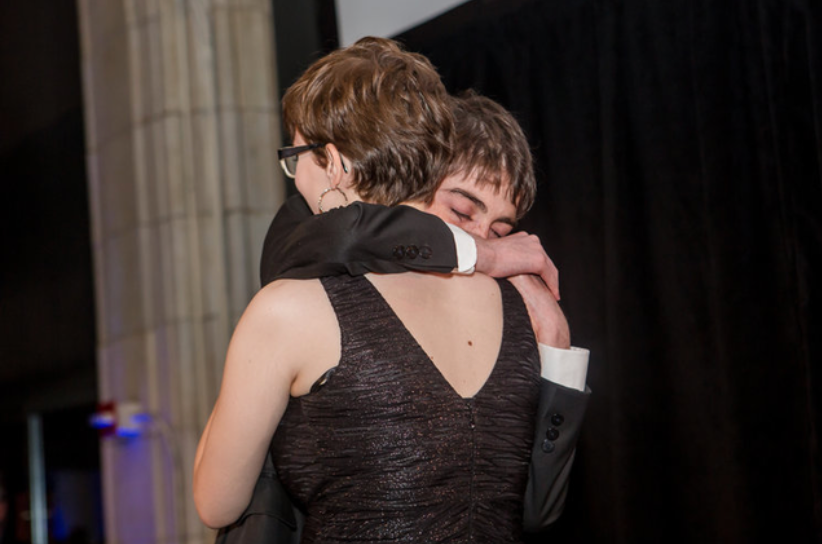
Samantha’s Mitchell’s act of giving was selfless. The fact that she gave twice (a rare occurrence), makes her remarkable. We are grateful that she joined the registry and we are thankful that she had the commitment to save a life. Today Samantha continues to live her life, has graduated from university, and is now working at the same hospital where she donated bone marrow. Her story has come full circle.
You can potentially save the life of someone suffering from a blood cancer by clicking here and joining the registry.
Brazilian Marrow Donor Urges Others to Join
Elaine Freitas is a photographer who loves to photograph love. Her subjects say that she is patient and calm. Some refer to Elaine as a magician, finding smiles where they didn’t exist before.
Elaine and her husband are both Brazilian. They had learned about a bone marrow registration in their hometown of Framingham, Massachusetts and heard the story about a 13 year old Brazilian girl who had had passed away because she could not find a matching donor. That girl was Icla da Silva.
They both registered at the Bone Marrow drive. Two years later, in 2004, Elaine received a call that she was a match for a patient in need. As expected, she was frightened, but went to Dana Farber Cancer Institute to be examined and tested.
In March of 2005 she donated bone marrow. She still does not know the patient, but she considers her experience the opportunity of a lifetime. Imagine knowing that you were able to assist at giving someone a second chance at life. That is an opportunity that she could not give up on. Elaine insists she would do it all over again at a moments notice.
Elaine Freitas hopes that people recognize the wonder of life by registering and ultimately being able to donate you bone marrow to save someone else’s life. She still remembers the story of Icla da Silva and could not imagine what she would do if a family member had leukemia without the chance to have a life again.
We honor you Elaine Freitas, you truly are a loving , patient magician.
Won’t you please consider joining the registry to give someone else a second chance at life?
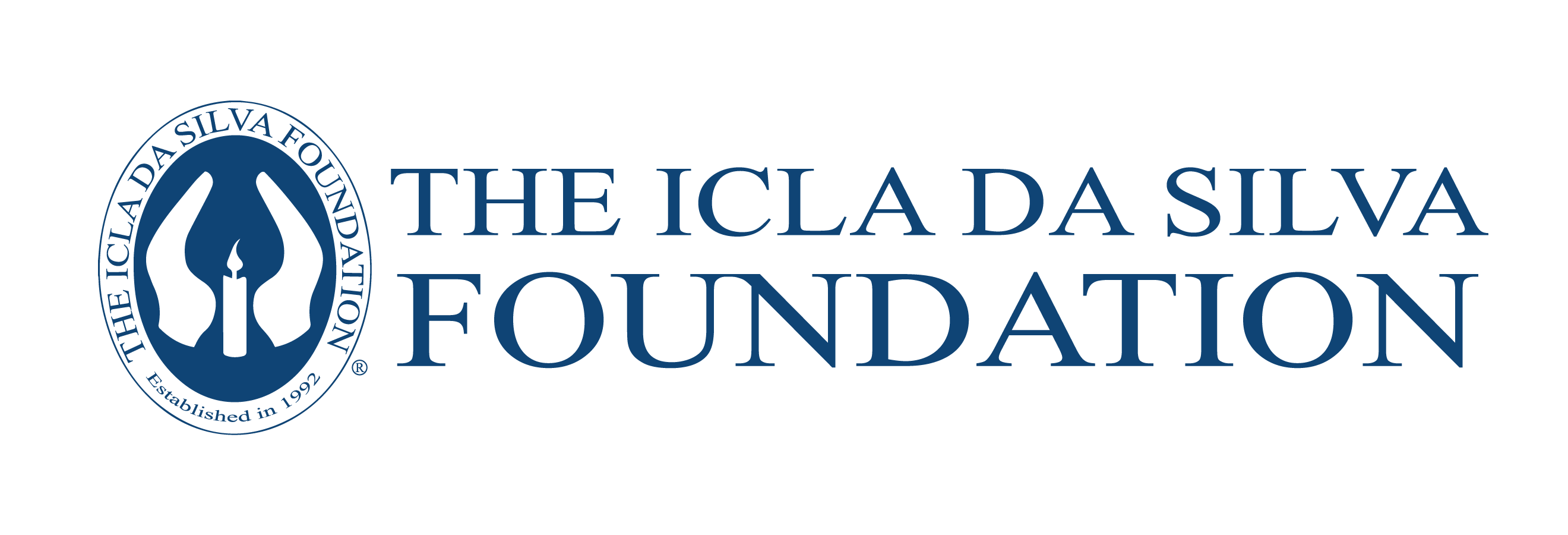
 English
English Spanish
Spanish Portuguese
Portuguese